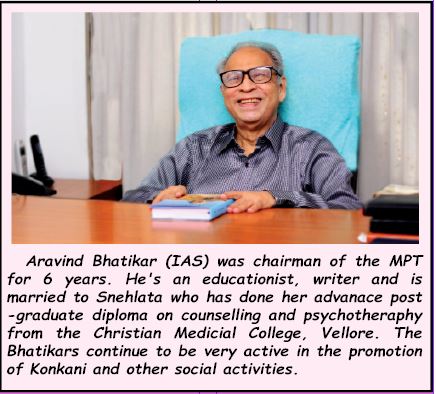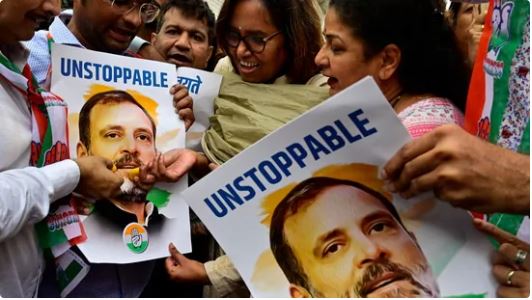“Unka Sankalp, Vipareet Bharat” “Sab ka Naash, Sab ka Vinaash”
NARENDRA Modi, the prime minister of India has visited the USA eight times during the last 10 years of BJP rule in our country. He did not address even one press conference at the National Press Club in Washington DC. His allergy to a free press is well-known.
In contrast, Rahul Gandhi loves to talk to the press and media people and has addressed news conferences twice at the National Press Club, Washington. This time, it was Rahul Gandhi, the Leader of the Opposition in the Indian Lok Sabha who was speaking to the world. Hitherto, no Indian political leader seems to have spoken twice at the prestigious National Press Club in USA. Rahul Gandhi has done it well before he gets an opportunity to do it for a third time — as the prime minister of India.
During his 45-minute long no-holds barred interaction with the press, he answered questions and gave his views on the state of democracy in India, the Indian economy and crony capitalism, marginalization of dalits, tribals, minorities, etc. Caste census, unemployment, Russia-Ukraine war, Israeli attack on Gaza, India-China relationship, performance of Modi government in India, Indo-US strategic relationship, the fight back by Indian democracy against BJP and RSS dictatorship, etc, etc.
While speaking about the performance of the Modi government during the last 10 years, he highlighted the attempts of the government to decimate the Indian free press and the electronic media, marginalize constitutional institutions like parliament, judiciary, federal system of governance, etc. He ridiculed Modi’s claim of being “non-biological person.”
Answering questions on the recent election results in India, he said that Indian democracy was fighting back. Modi has failed to secure a majority in the 2024 Lok Sabha elections. He could become prime minister for a third term only with the support of smaller parties which were members of the National Democratic Alliance. He agreed that the Indian voter was resilient but stressed that the voter’s resilience cannot deliver results, unless it is supported by an appropriate democratic structure. He reminded the World that the INDIA group of which the Indian National Congress was the largest member, had to fight not only the BJP, but the illegal actions of government agencies like the ED, the CBI, the income-tax department and the mainstream media almost totally captured by the BJP. He said the Congress and the Indian voter was fighting back.
As was to be expected, the BJP troll army, active in social media and on the “godi” TV channels on screen raised a hue and cry over the “anti-national” statements made by Rahul Gandhi on foreign soil. Central ministers and State chief ministers, especially chosen to lead the attack, vied with each other to vilify Rahul Gandhi and increase their own proximity to the Modi-Shah duo.
Notwithstanding the law on the subject, the BJP leaders seem to have conveniently forgotten the difference between being anti-government and anti-national. In today’s context, raising a voice against the autocratic Modi-Shah government may be an act of rare patriotism instead of being an anti-national act. The real anti-national outbursts were made by Narendra Modi a few years back from foreign soil when he regretted being born in India and made derogatory utterances about our country. His anti-national utterances have been put together in a video by Supriya Shrinate, a spokesperson of the Indian National Congress.
Rahul Gandhi was in USA for three days from September 8. Just when he had finished explaining to the American press Indian democracy’s fight back for survival and for revival of constitutional institutions, Narendra Modi was attending a Ganesh puja at the residence of DY Chandrachud, the chief justice of India.
The question whether constitutional institutions in India are fighting back for survival is still wide open! It is “work in progress” for Rahul Gandhi and for the Indian voter. It is for WE, THE PEOPLE to remind the Indian judiciary to keep a perceivable distance from the executive, since justice must not only be done but must also be perceived to be done.

